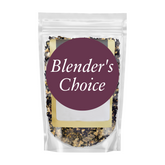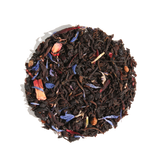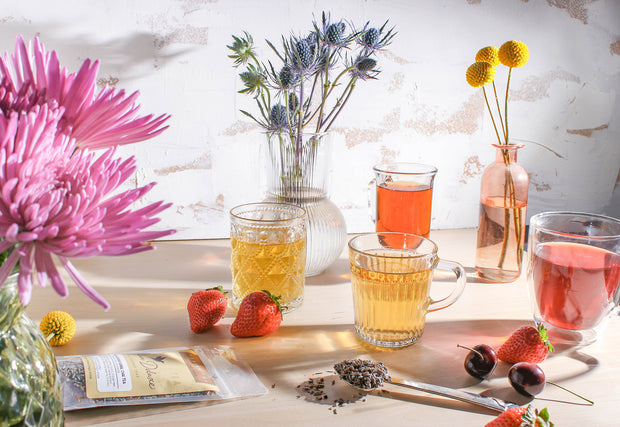Let’s face it -- not many neighborhoods will be friendly to a no-holds-barred edible landscape. Economics is among the most pressing reasons for this since your property value is intertwined with the property values of your neighbors. If you do anything that might adversely affect the perceived or assessed value of your home, such as neglecting your property, using your yard as alternative parking for your cars, or planting a raucous farm out front, there is bound to be some pushback.

Don’t forget about the power of curb appeal; a great looking front yard garden is a wonderful asset to your home. Why not plant your food with an eye toward the overall beauty of your front yard? I suggest a gentler approach to creating an edible garden in such a prominent location: integrate. Integrating fruits, vegetables, and herbs with ornamentals is the best way to approach a garden that has the extra demand upon it to look great all year long.
By expanding our edible palette, we create pleasing planting associations that help our edible gardens look the best they can throughout the seasons. These gardens will literally stop traffic.

Beauty Matters
Anything you grow in your front yard has to work hard for you. You want that prime piece of real estate to look fantastic as well as perform for you throughout the seasons, so any edible you plant there is under extra pressure. It will be scrutinized. When dealing with the front of your home, we have to come to grips with the fact that beauty matters. Your front yard is a greeting to the world.
Before jumping into creating your new front yard edible garden, take some time to think about what you are about to do. It’ll be fun, but you are going public. When your vegetable garden is in the backyard, you have the freedom to “let it all hang out.” But out front you need to make deliberate choices that give your edibles as much ornamental appeal as any well-designed garden. This involves getting to know the vegetables, herbs, and fruits that give you not only the food you want, but also the ease of care you need and the good looks you crave.

The successful edible front yard garden all comes down to the right plant in the right place. We have to be brutally selective, following the same kind of rules used by ornamental gardeners, when choosing which edibles to plant out front. Yes, these extra generous plants do us the honor of feeding us, but when they are placed front and center they have another set of standards they need to meet. Here are my criteria for any edible plant to be included in a front yard garden.
RULES FOR FRONT YARD EDIBLES
1. The entire plant must have a pleasing form -- it cannot stand on the merits of its flowers (or vegetable or fruit) alone.
2. It has to give me at least two reasons to plant it (such as color and form, or texture and seedpods).
3. Its leaves must hold up for the entire growing season. Some edibles have leaves that are susceptible to mildews, or are such heavy feeders that the foliage is just worn out by the end of the season. In the backyard, you can deal with it. In the front yard, plant something else.
4. If you must plant less ornamental edibles in the front yard because you have no other suitable space, pay extra attention to your hardscape. It’s a lot easier to overlook wilted cucumber leaves if they are supported by a beautiful trellis.

Style
Everyone has a style: some of us are casual while others live to preen and have all eyes upon them. Gardens are no different, especially when they are in the front yard. By choosing to create an edible garden in public view, you are telling people quite a bit about yourself.
Are you an organized, hardcore food devotee who has grown your own fruits and vegetables for years? Your front yard should reflect your knowledge and passion, and you should invest in an infrastructure (what we in the garden design business call hardscape -- raised beds, paths, patios, and trellises) that will make your garden as lovely as it is productive. Or maybe you are new to gardening but you want to have it all -- an eclectic garden that feeds your eye as well as your family. You can integrate herbs, fruits, and vegetables into your ornamental plantings and create a fun, hybrid mix of garden styles.
Your choices will be apparent to your neighbors and to all who pass by. If you make those choices carefully you will create a front yard food garden with style and flair.

Where You Dwell
The modern garden is a regional garden, especially when it’s an edible front yard. Observing the specifics of your region with an open mind can bring a tremendous amount of richness to the beginning stages of a design process. Let the natural surroundings or the history of your state, county, or city be your muse.
We no longer want the front of our home to look like a yard in Anywhere, USA. Tap into your region’s essential character -- perhaps it is the classical, southern charm of Savannah, Georgia, or the eclectic, anything-goes attitude of San Francisco -- and reflect that inspiration in the design of your edible garden. For example, in rough and tumble central Texas, aluminum stock tanks used by ranchers for feeding and watering cattle have been appropriated by gardeners. When these familiar objects are repurposed as raised beds, planters, and ponds, the look is beautifully grounded in place and says “Texas” loud and clear.
Your choice of plants can also speak volumes about your region. In Southern California, well-known for its citrus groves, a front yard lemon tree pays homage to an old Hollywood spirit almost as effectively as a palm tree—and you get juicy fruit as a bonus. The state of Washington is rich with apple orchards, and eating crisp, delicious apples freshly picked from your front yard is a luxury that most climates can’t provide. Be guided by the specifics of your region.
YOUR SIDE OF TOWN
Another step in this process is to take long walks around your neighborhood and carefully study the surrounding houses. Is your neighborhood uniformly planned with houses of similar color and architectural style? Or do you live in an area that is more eclectic? Take a look at how your neighbors have planted their front yards. If others have removed their lawns and replaced them with gardens, notice how those gardens use the space. You’ll see that homes that have a mix of plants surrounding them seem more grounded, friendly, and interesting than those with the traditional lawn and foundation planting.
PLANTING FOR WHERE YOU LIVE
Look at the plants in your neighborhood and pay special attention to what is thriving. Easy-to-care-for gardens need plants that do well in your area. Don’t discount plants even if they seem too common: there’s no such thing as a bad plant, or an unfashionable plant, only a plant that hasn’t been used well. Junipers, for example, are often considered dull and boring, but they can help create an evergreen rhythm to gardens in all parts of the country -- hot or cold -- and in all kinds of garden situations, from sunny to part shade. (Junipers also produce beautiful berries that can be used as spices in cooking and in herbal beverages -- a natural partner to the front yard edible palette.)
While hobby gardeners will often hunt down and cultivate plants from different climates, it is always smarter to choose plants that are accustomed to the area in which you live. The USDA zone map divides the country into eleven hardiness zones, each of which shows a different area of minimum winter temperatures. Knowing what zone you live in will give you a good general idea of what plants will flourish in your area.
Visiting your local nursery and talking to the knowledgeable staff is a smart step to take before choosing plants. I have never met a staff member at a nursery who doesn’t love talking about plants and the best way to grow them. They will know which fruit trees flourish where you live, if you need tomato varieties that will ripen early in cool weather, or what type of lettuce is best for hot weather. Not only is every zone different, but your particular city, side of town, or even neighborhood may have specific variables that affect the way your plants grow. Getting advice from someone who understands the way things grow in your climate can save you time and money.
From “The Edible Front Yard” by Ivette Soler, published by Timber Press. Used with permission.


![Spring Break Tea Variety Pack [6-Pack Variety of Flavors]](http://www.plumdeluxe.com/cdn/shop/files/spring-break-pack.jpg?v=1740682266&width=165)















